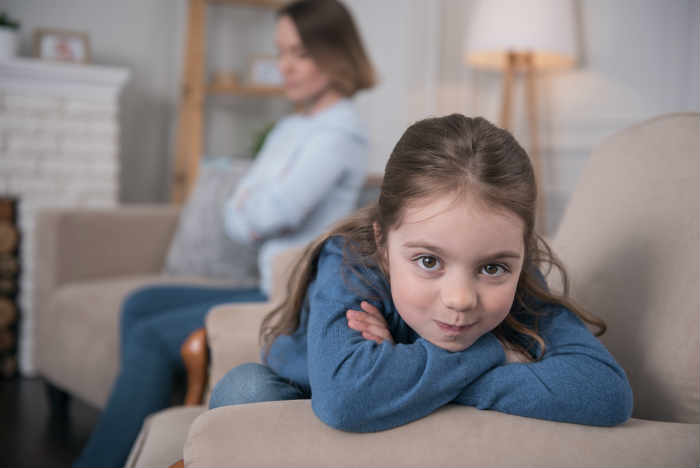











If you have ever done potty training for a toddler, behavior training for a dog, or even had cheat meals while dieting, you have engaged in a technique called operant conditioning. Operant conditioning is a behavior modification technique developed by B.F. Skinner, which uses reinforcement and punishment to shape behavior (Staddon & Cerutti, 2002).

It’s a learning method for altering certain behaviors by utilizing punishment and reward. If you are teaching a dog not to pull on the leash while walking, you might reinforce good behavior by giving them a treat when they do not pull. If you are teaching a toddler to express frustration with words rather than throwing temper tantrums, you might put them in a timeout when they act out. If you are trying to lose weight, you might reward yourself for having a good week of working out and eating well by having pizza for dinner on the weekend.
One of the ways to go about conditioning is through positive punishment. Skinner’s operant conditioning theory provides the foundation for these concepts, explaining how adding an adverse stimulus can decrease unwanted behaviors. The positive part means adding, rather than removing, some kind of stimulus, and the punishment means it is an adverse stimulus. For example, rather than taking their phone away (negative punishment), a parent might force their teen to do extra chores around the house for a month (positive punishment). There are benefits and drawbacks to this particular type of conditioning.
Operant conditioning is all about how our behaviors are shaped by the consequences that follow them. This approach to behavior modification helps explain why certain behaviors become more common while others fade away, depending on whether they are met with reinforcement or punishment. In everyday life, operant conditioning is at play whenever we try to increase desired behavior or decrease unwanted behavior, whether in children, pets, or even ourselves.
When it comes to punishment, operant conditioning distinguishes between positive and negative punishment. Positive punishment means adding an aversive stimulus after an undesirable behavior to reduce the likelihood of that behavior occurring again. For example, if a child throws a toy, a parent might assign an extra chore as a consequence—this added task is the unpleasant stimulus meant to discourage the unwanted behavior. In contrast, negative punishment involves removing a pleasant stimulus to decrease a particular behavior. Taking away a child’s favorite toy after they misbehave is a classic example of negative punishment; the loss of something enjoyable serves as a deterrent for future bad behavior.
Reinforcement, on the other hand, is used to encourage appropriate behavior. Positive reinforcement involves adding a desirable stimulus, such as praise or a reward, when a person’s behavior aligns with what’s expected. For instance, a child who helps clean up may receive a sticker or extra playtime, reinforcing the good behavior. Negative reinforcement works by removing an unpleasant stimulus when the desired behavior occurs. In horse training, for example, pressure is released when the horse performs the correct action, making it more likely that the horse will repeat the behavior in the future (Sivamayil et al., 2023).
It’s important to note that in operant conditioning, “positive” and “negative” don’t mean good or bad—they simply refer to whether something is being added or taken away. Positive means introducing a stimulus, while negative means removing one. Understanding this distinction is key to effectively using these behavior modification techniques.
Punishment techniques, including both positive and negative punishment, can be extremely effective in reducing unwanted behaviors when used appropriately. However, physical punishment, such as corporal punishment, can lead to negative outcomes like increased aggression, antisocial behavior, and even mental health problems. Because of these risks, many experts recommend that parents, teachers, and caregivers use alternative methods, such as positive reinforcement and problem-solving, to encourage desired behavior and address behavioral problems.
There are several examples of positive punishment in daily life. A teacher scolding a student for talking out of turn, a parent assigning extra chores for breaking a rule, or a coach making a team run extra laps after a mistake are all ways of adding an unpleasant consequence to reduce inappropriate behaviors. While these methods can be effective in the short term, combining them with reinforcement strategies, like rewarding good behavior, tends to produce more positive outcomes and lasting behavior change.
Ultimately, understanding operant conditioning and the roles of positive and negative punishment, as well as reinforcement, can help anyone looking to influence behavior, whether in children, students, or even animals. By thoughtfully applying these techniques and considering the potential consequences, it’s possible to encourage appropriate behavior, reduce unwanted behaviors, and promote a healthier, more positive environment for learning and growth.
When using positive punishment, it is important to teach children different behaviors as alternatives to the unwanted actions.
While reinforcement is found to be better in the long term, punishment can be effective if utilized appropriately. It is important to process through this type of conditioning, making sure you go about it in a way that will be effective and help you achieve the desired behaviors and goals.
Sources